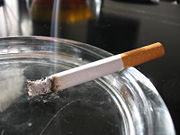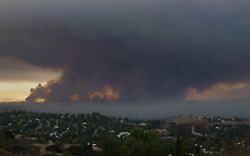- Air Homepage
- Global Warming
- Gases in the Air
Unraveling the Enigma of gases in the air: Breathing Under Scrutiny
Learn more about the air.
Can we live with these gases in the air?
Discover the invisible and how the gases in our air shape our world! Read how gases interact in the atmosphere to form weather patterns, regulate temperatures, and even affect the climate. Also, look at how human activities affect these gases and how to mitigate them.
Air that's clean doesn't have harmful pollutants like ozone, carbon dioxide, sulfur dioxide, and nitrogen dioxide. About 78% of air is nitrogen, 21% oxygen, and 1% other gases like argon, carbon dioxide, and water vapor. About 21% of air is oxygen. 78% of the air we breathe is nitrogen.
Who cares? Our health and the environment depend on the air we breathe. Pollutants can cause breathing problems, and greenhouse gases cause climate change. Our health, environment, and economy depend on the composition of the air. Ecosystems, industry, and machinery can be affected. We need to monitor and control the air composition to protect people and the environment.
We need other gases for our health and well-being, like argon, carbon dioxide, and trace amounts of other gases.
Well, we don’t know all the answers. Respiratory and lung diseases are at an all time high. Even though the amount of air pollutants has been decreasing over the past twenty years in many regions, we are still suffering.
Particularly hard hit are the inner cities and industrial areas. Why is there still so much misery with all these regulations and air quality programs?
We didn't see the monster until it was upon us. The first time we saw this was with tobacco. At first, we thought only the users suffered. Second hand smoke affects everyone around it. Who knows what else we'll find with more research.
Contaminants are everywhere. The air is full of harmful gases. Some of them are carbon dioxide, carbon monoxide, nitrogen dioxide and sulfur dioxide.
Cars, fires, and other sources of additional gases in the air
Coal dust, wood smoke, forest fires, volcanic ash, and just about anything else that bonds with water vapor in the air are other contaminants.
Pollutants from cars are a big problem. They spew carbon monoxide and stir up dust that gets trapped in water vapor and travels around the world. Second hand smoke affects more than just the immediate area.
Let's take a big forest fire in California. Large clouds of gas and particulates drift towards the Midwest, aggravating lung conditions like asthma.
It can also block the sun, robbing crops of much-needed sunlight. Watch how fast a wind-driven fire moves.
Cold spells and early frosts can be caused by air pollution. Weather patterns will also be affected by smoke, which affects agriculture.
Here's an example. Take a look at coal-burning power plants. First, coal miners can die from black lung disease. A power plant spews particulates into the air, causing multiple lung ailments. People who live within 30 miles of a plant are especially affected. In 2004, a research project found that kids who live close to power plants have nearly twice the asthma rate as kids who live farther away.
According to a 2005 study, 122 million people live in counties that don't meet EPA air quality standards. This can affect the whole economy.
Getting sick affects job performance and job absenteeism, which in turn affects production output, which in turn affects GDP. We're playing catch up right now. The composition of the air and concentrations of these gases have been getting better and better.
It's like everyone thinks electric cars are the greatest thing since sliced bread. It looks like a great advancement for clean air, but it needs electricity to work.
Is there anything we can do?
The increased particulates and gases from coal burning electric plants affect us too. Let's harness the sun, wind, and water to make electricity.
If you need help with industrial gases in the air, I can help. Are you looking for an efficient and reliable way to manage your company's emissions? Is it hard to keep up with the different deadlines and regulations imposed by provincial and federal agencies? We've got a solution.
Calvin Consulting provides high-quality emission reporting services that meet all regulatory requirements. We make sure your reports are accurate, comprehensive, and on time thanks to our team of experts.
You can avoid costly penalties and fines for non-compliance, while also reducing your company's environmental impact. We make emission reporting as easy and stress-free as possible, so you can focus on your business.
Send Barry, our expert consultant, an email to learn more about how Calvin Consulting can help. Feel free to ask him any questions and get a free consultation.
We can help you stay compliant and environmentally responsible - don't wait until it's too late. Go back from Gases in the Air to the Solution Global Warming webpage.
Search this site for more information now.
What gases are present in the air that are of concern to us?
Which gases are problematic in the air? From where do they originate? What are their effects on us?
Do you have concerns about air pollution in your area??
Perhaps modelling air pollution will provide the answers to your question.
That is what I do on a full-time basis. Find out if it is necessary for your project.
Have your Say...
on the StuffintheAir facebook page
Other topics listed in these guides:
The Stuff in the Air Site Map
And,
Thank you to my research and writing assistants, ChatGPT and WordTune, as well as Wombo and others for the images.
GPT-4, OpenAI's large-scale language generation model, helped generate this text. As soon as draft language is generated, the author reviews, edits, and revises it to their own liking and is responsible for the content.





New! Comments
Do you like what you see here? Please let us know in the box below.